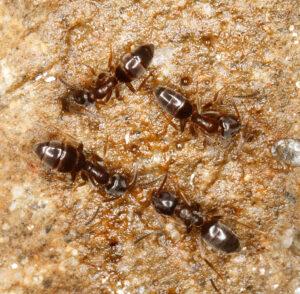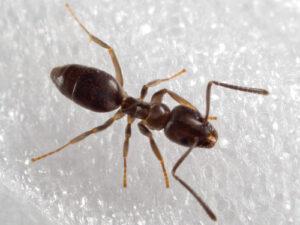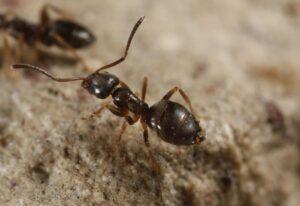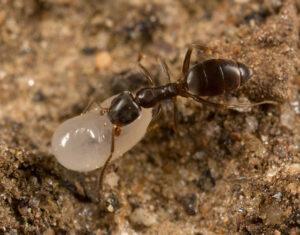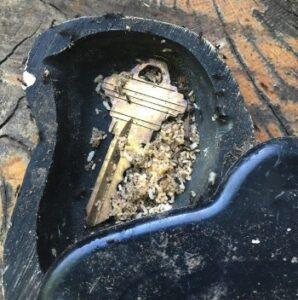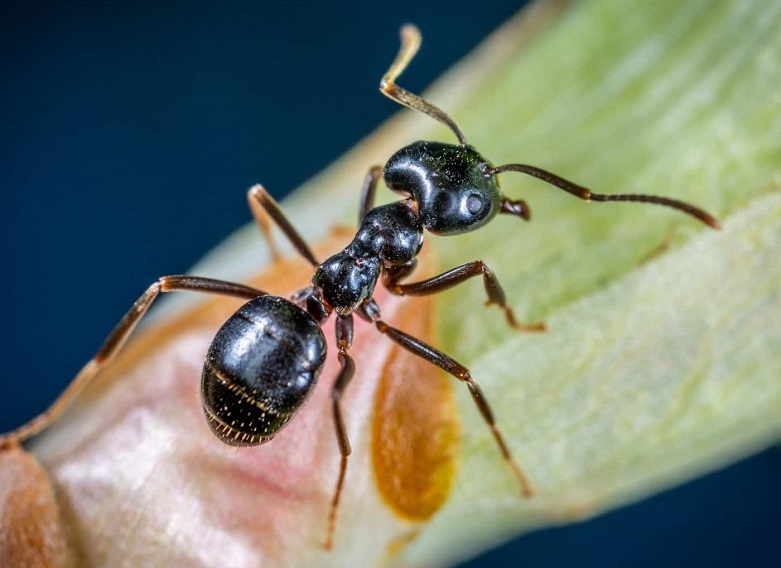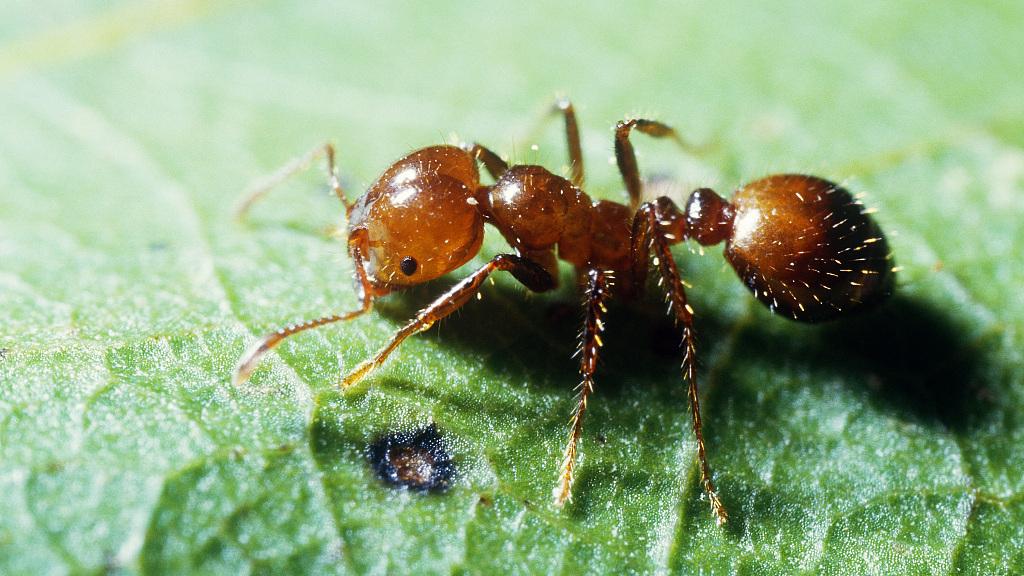Odorous House Ant (Tapinoma sessile)
Updated on
10/01/2023Odorous house ants are small ants that are often considered pests as they set up colonies inside homes and contaminate foods. Also known as stink ants and coconut ants, they leave a foul smell, like rotten coconut, if crushed – earning them their name. Though not poisonous or dangerous, they are a nuisance as they quickly establish colonies in your house and wouldn’t go away anytime soon.
Scientific Classification
- Family:Formicidae
- Subfamily:Dolichoderinae
- Tribe:Tapinomini
- Genus:Tapinoma
- Species:T. sessile
Conservation Status
Description
These ants have a shiny black or dark brown body, no larger than 1⁄16 to ⅛ inch (1.5-3.2 mm). The gaster portion or stomach (the largest segment of an ant’s body) lies on top of the petiole (the small narrow ‘waist’ part), hiding one of its nodes. It makes the petiole appear tiny.
The gaster points downward, which is another characteristic feature that helps distinguish the odorous house ants from other similar ants. The abdominal end of the gaster has a slit-like opening instead of a sting.
The thorax (the section right behind the head) looks uneven from the side.
Their antenna has 12 segments but no club. Like any other ant, the queens and reproducing males have two pairs of wings.
Distribution: All over the US, as well as southern Canada and Northern Mexico
Habitat: Indoors, near heaters, under sinks, beneath the floor; Outdoors, beneath logs, debris
Do They Bite: No
Lifespan: Queen and workers – up to a year; Males – up to 10 days after mating
Predators: Birds, toads, and larger ants
Behavior and Characteristics
Diet and Foraging
They eat anything they can find. Like most other ants, they often target sugary foods and proteins over lipids (nuts and oils) and are particularly fond of honeydew. They prefer to live near food sources instead of carrying the food too far, so they change nests every 3-4 weeks and set up new nests near their current food source. During winter, they stick together in a single nest. Then in spring and summer, they build multiple nests near different food sources (seasonal polydomy).
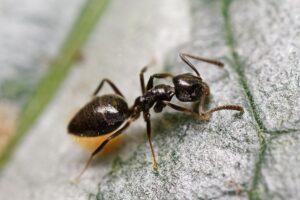
Known for being hardy — worker ants with severe injuries can live and work for days. Queens can survive for months without food and lay eggs even when their abdomen is crushed. They are also extremely tolerant to both heat and cold.
Their habitat often overlaps with others like the Argentine ant and cornfield ant. But being a peaceful species, the odorous house ants avoid confrontation with other insects.
Nest and Colony
Their colonies can contain thousands of ants and have multiple colonies at a time, having more than one queen. The queen ants lay eggs that hatch after 2-3 weeks, with the larval stage lasting another 2-4 weeks. The larva then enters the pre-pupal and pupal stages, taking approximately 2-3 weeks to become adults.
Adult winged ants ready to reproduce are called swarmers, which appear between May and July. Seeing them in or near your home usually indicates they already have a well-established colony.
Some studies suggest that these ants can co-exist with other species in compound nests.
Comparison With Similar Species
| Odorous House Ant | Carpenter Ant | Pavement Ant | |
|---|---|---|---|
| Smell | Rotten smell | None | None |
| Size | Around ⅛ inch | Around ½ inch | Around ⅛ inch |
| Appearance | Tiny, black-brown, with a small petiole | Black or reddish-brown, much larger | Tiny, black-brown; petiole is more defined |
| Common Infestation Site | Inside houses, under sinks, floor | In and around wooden furniture | Outdoors, in driveways and sidewalks |
| Damage Caused | Contaminate foods | Damage wooden objects | Contaminate foods |
Getting Rid of Odorous House Ants
As already mentioned, they are challenging to eliminate, especially if it’s a well-established infestation. Though it is not impossible to kill them using insecticides and traps, eliminating one colony is never enough. When using lures or baits, keep them out for about 2-3 weeks, replacing them when necessary.
FAQs
Ans. When you kill or step on these ants, they emit a chemical similar to a penicillin mold – the same one that causes foods to rot. This is what causes them to leave the rotten smell, often described as that of rotting coconut, overripe fruits, stale butter, or blue cheese. Entomologists Clint Penick and Adrian Smith were the first ones to research and discover the reason for the smell.
Source
objects.liquidweb.services, extension.umd.edu, inaturalist-open-data.s3.amazonaws.com, hort.extension.wisc.edu, callnorthwest.com, calphotos.berkeley.edu




